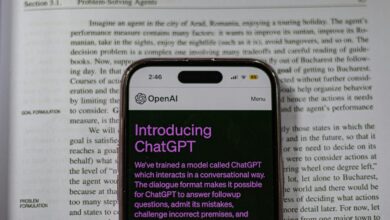Predictive Analytics In Education: How Machine Learning Forecasts Student Successs

Imagine knowing which students might need extra help before they even ask for it. Or determining the best teaching strategies for each class. It seems futuristic, but predictive analytics makes it a reality. This powerful tool uses machine learning to forecast student success, helping educators make smarter decisions and support their students better.
Balancing schoolwork can be tough, and sometimes, you might need a little extra help to keep up. That’s where a paper writing service online can be useful. These services can assist you in handling your assignments and help you keep up with your studies. Now, let’s dive into the fascinating world of predictive analytics in education and see how it can make a real difference.
Predictive analytics: An overview
Predictive analytics is the practice of gathering and examining data to predict future events. In education, this means using student data to predict academic performance and identify those who might need extra support.
Why is predictive analytics a big deal for schools? It helps educators make informed decisions, tailor teaching strategies, and improve student success rates. By understanding patterns and trends, schools can act proactively rather than reactively.
Predictive analytics involves three key steps:
- Data collection
- Analysis
- Interpretation
First, you gather relevant data, like grades, attendance, and behavior records. Afterward, you scrutinize this data with different statistical methods and algorithms. Finally, you interpret the results to make predictions and inform decisions.
Role of machine learning in predictive analytics
Machine learning works by using algorithms to process large amounts of data. These algorithms detect patterns and connections in the data, which can be used to forecast outcomes. The more data they get, the more precise their predictions become.
Machine learning boosts predictive analytics by offering more precise and detailed predictions in education. For instance, it can analyze complex datasets, like student performance over time, to predict which students are at risk of falling behind. This enables teachers to step in early and give specific assistance.
With a better understanding of predictive analytics and the role of machine learning, we can see how these tools can transform education. They provide a forward-thinking method to help students.
Applications of predictive analytics in education
Predictive analytics isn’t just a cool concept; it’s currently being used in real classrooms. Let’s explore some of the ways schools are using this technology to help students succeed.
1. Personalized learning paths
Customization
Each student has a unique learning style. Predictive analytics helps design personalized learning plans. This way, students get the right material at the right time, making learning more effective and enjoyable.
Improving outcomes
Personalized learning boosts student engagement and motivation. This leads to better academic performance and a more enjoyable school experience. It’s like having a GPS for your education, guiding you toward success.
2. Identifying at-risk students
Early warning systems
Imagine a system that alerts teachers when a learner is likely to experience difficulties. Predictive models analyze data like attendance, grades, and behavior to spot warning signs early. This means teachers can step in and help before things get worse.
Intervention strategies
Once at-risk students are identified, schools can tailor support strategies to meet their specific needs. This could include extra tutoring, help from professional college essay writers, or personalized learning plans. It’s like having a custom-made safety net for each student.
3. Resource allocation
Efficient use of resources
With limited resources, schools need to allocate them wisely. Predictive analytics helps administrators see where resources are needed most, ensuring they’re used effectively to support student learning.
Supporting programs
Schools can allocate more resources by identifying which programs have the most impact. This means students benefit from the best possible support. It’s like investing in the tools that will give the best results.
Benefits and challenges
Though predictive analytics has many benefits, it is not entirely perfect. Let’s take a closer look.
Benefits:
- Improved student outcomes: The main benefit is better student success rates. When teachers know who needs help and how to help them, everyone wins. It’s like giving students a personalized roadmap to success.
- Data-driven decision making: Predictive analytics supplies solid data to support decisions, leading to better teaching strategies and school policies. It’s like having a manual for making informed choices.
Challenges:
- Data privacy and ethics: Collecting and analyzing student data raises important questions about privacy and ethics. Schools need to use data responsibly and safeguard students’ privacy. It’s like having a lock on your diary—some things need to stay private.
- Implementation hurdles: Integrating predictive analytics into a school’s existing systems can be tricky. It demands time, funds, and training, but with adequate support, these obstacles can be surmounted. It’s like learning to ride a bike—wobbly at first, but worth it in the end.
Future of predictive analytics in education
New developments in machine learning and data analysis promise even more accurate predictions and insights. With the progress in AI and data processing, the tools are continually improving. It’s akin to upgrading from a flip phone to a smartphone, making everything more efficient.
Ultimately, predictive analytics could revolutionize education. Schools will be able to support each student in a personalized, data-driven manner, resulting in higher success rates and happier students. Picture a world where every student gets the aid they need to succeed.
Conclusion
Predictive analytics and machine learning are transforming education, providing innovative methods to assist students and enhance outcomes. By understanding and utilizing these tools, schools can offer tailored learning experiences and proactive support. Despite the challenges, the benefits are significant, paving the path for a more promising educational future.
Featured image credit: Mikael Kristenson/Unsplash



